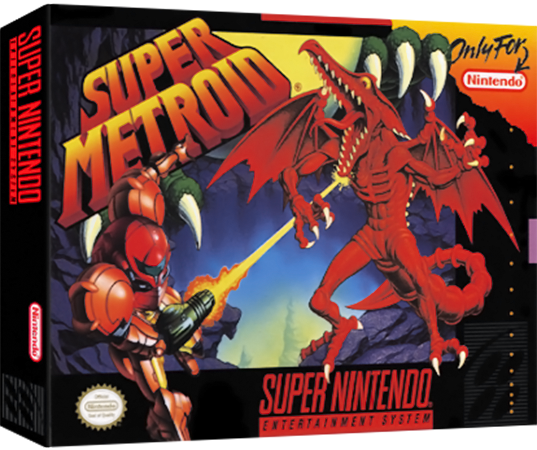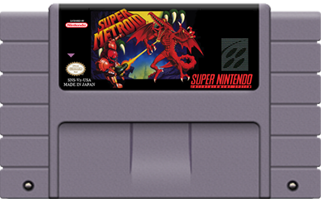

Super Metroid, developed by Nintendo R&D1 and released for the Super Nintendo Entertainment System (SNES) in 1994, stands as a timeless classic and a defining entry in the action-adventure genre. With its atmospheric world, non-linear gameplay, and groundbreaking design, Super Metroid captivates players from start to finish, earning its place as one of the greatest games of all time.
Year: 1994
Manufacturer: Nintendo
Genre: Platform
Rating: Other - NR (Not Rated)
Graphics and Sound:
Despite the limitations of the SNES hardware, Super Metroid's visuals remain stunning even by today's standards. The game boasts detailed sprites, richly colored environments, and an incredible sense of atmosphere. From the eerie depths of Brinstar to the desolate corridors of Maridia, every area feels distinct and evokes a unique mood.
The soundtrack is equally remarkable. Composed by Kenji Yamamoto and Minako Hamano, the music perfectly complements the gameplay and enhances the overall experience. From the haunting melodies that play during moments of solitude to the adrenaline-pumping tracks that intensify combat encounters, the score adds depth and emotion to the game.
Gameplay and Exploration:
Super Metroid's gameplay revolutionized the concept of exploration in video games. It introduced a vast, interconnected world that encouraged players to venture off the beaten path and discover hidden secrets. The game's non-linear structure empowers players with the freedom to choose their own path, allowing for a deeply immersive experience.
As players control Samus Aran, the iconic bounty hunter, they gradually acquire new weapons, upgrades, and abilities. These additions open up previously inaccessible areas, encouraging backtracking and uncovering hidden items. The satisfaction of finding a hidden passage or obtaining a power-up is unmatched, and the game strikes an exquisite balance between guiding players and letting them explore on their own terms.
Story and Atmosphere:
Super Metroid's narrative is conveyed subtly through environmental storytelling and minimal dialogue. As players progress through the game, they uncover the remnants of a failed scientific expedition and learn of the kidnapping of a baby Metroid, leading Samus on a quest to rescue it from the clutches of the Space Pirates.
The game's atmosphere is its greatest strength, creating a hauntingly atmospheric world that engulfs players in its sense of isolation and mystery. Super Metroid masterfully employs visual and audio cues to build tension, and the moments of silence punctuated by sudden bursts of action create a captivating sense of anticipation.
Replayability and Legacy: Super Metroid offers a significant amount of replay value. Completionists will be enticed by the multiple endings and the hunt for 100% item collection. Speedrunners will find joy in optimizing their routes and shaving off precious seconds from their times. Even after completing the game, Super Metroid leaves a lasting impact, inspiring a generation of developers and becoming the cornerstone of the Metroid series.

Conclusion:
Super Metroid remains a shining gem in the gaming industry, representing a pinnacle of design, atmosphere, and exploration. Its enduring legacy speaks volumes about its impact and the craftsmanship behind its creation. Whether you're a fan of the series, a lover of exploration-based games, or simply seeking a captivating and immersive experience, Super Metroid is an absolute must-play that continues to resonate with players even decades after its release.
Explore in-depth reviews and analyses of classic Super Nintendo Entertainment System (SNES) games, including gameplay mechanics, graphics, sound, and overall nostalgic experience.